For the slight premium that you’ll pay, the Tiago offers more safety tech, bigger engine, space and more creature comfort.
Taking into the fact that the 1.0-litre Kwid is around the corner and will be considerably expensive in contrast to its 800cc counterpart, the Tiago makes an even stronger case for itself.
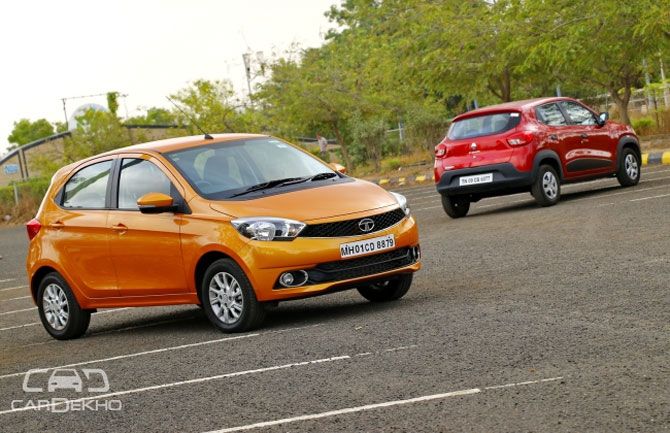
The Tata Tiago and the Renault Kwid are two cars that have created quite a stir in their segments, the likes of which we haven't seen in quite some time.
The Renault Kwid was launched last year around September, while Tata launched the Tiago recently.
The approach of both the cars to their respective segments is somewhat similar - never heard features in the segment coupled to an aesthetically striking design along with powerful and fuel efficient powertrains.
The Renault Kwid is the French automaker’s maiden attempt to take on the country’s most loved and highest selling Maruti Suzuki Alto 800.

Having said this, Renault’s approach was rather out of the box, with the Kwid’s Duster inspired stance in contrast to Maruti’s run of the mill hatchback.
The Tiago, on the other hand, was Tata’s desperate attempt to prove itself since the Zest and the Bolt didn’t click as much as the automaker was hoping. And it shows; after two months of its launch Tata has rolled out its 10,000th Tiago and has received more than 22,000 bookings.
It is the spiritual successor of the almost two decades old Indica and yet is not even remotely related to it. Even Tata’s logo is a new 3D one in the Tiago. Tata has priced it so aggressively that it not only undercuts its rivals, but a few variants in Renault's territory as well. And that is why we are doing this comparison.
Exteriors
Renault hit a sweet spot, in a market which is so obsessed with high-riding SUVs, with the crossover looks of the Kwid.
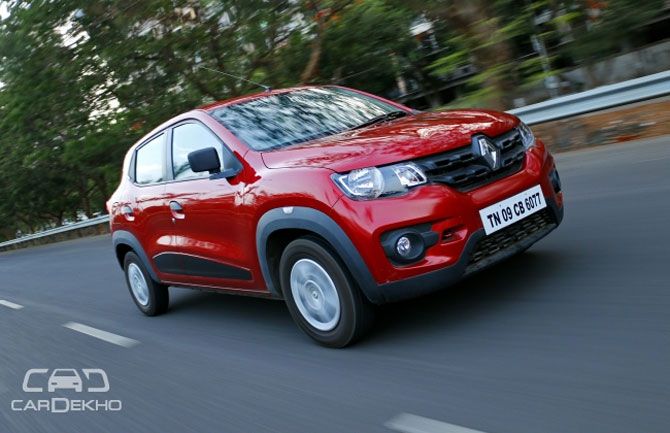
Design elements such as the beefy wheel arches, a generous amount of body cladding and 180mm of ground clearance make the Kwid stand out from its peers.
The only element that looks lost in the overall scheme of things is its 155-cross-section 13-inch skinny tyres. The squared-off wheel arches exaggerate things further. It features a three-nut design for the wheels and alloy wheels are optional on the Kwid.
When it comes to design the Tiago has a different approach to the kwid. The Kwid’s overall appearance makes it stand out amongst the crowd while the Tiago knows how to blend in.
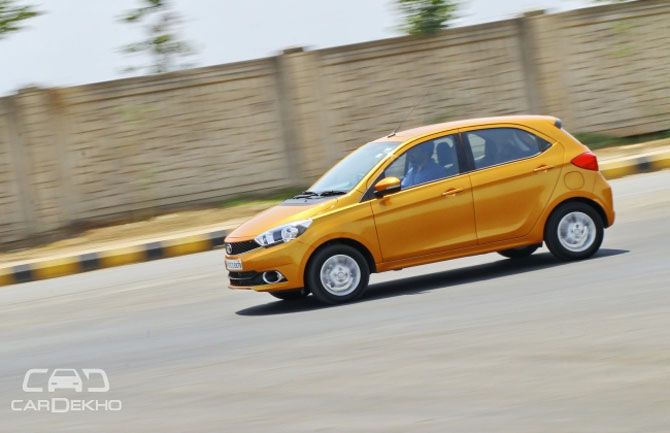
The Tiago introduced Tata’s brand new ‘Impact’ design language and it is possibly the best and most modern vehicle we have seen coming out of Tata’s stable.
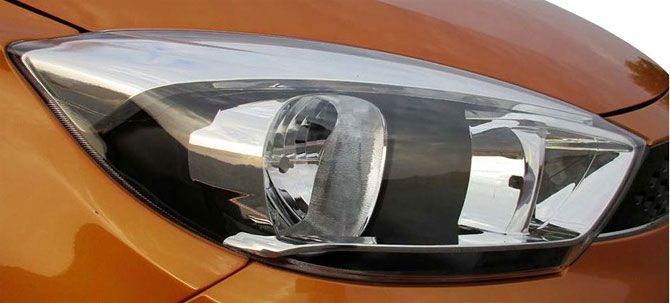
Tata has paid a lot of attention to little details, which is not seen in a car of this stature.
Detailing such as the hexagonal pattern on the gloss black grille that has been carried to the rest of the car as well, the way the chrome applique runs through the width from headlamps to the grille, the cute spoiler spats and the blacked-out lower half of the rear bumper.
Also, most of the panel gaps are in check, the sheet metal appears solid and thick and the paint looks lustrous.

The Tiago scores the first point over the Renault in terms of sheer build quality.
Interiors
The interiors of the Tata Tiago have a similar story to tell. Hop inside and you’ll be surprised and the only question which will buzz in your mind is, “Is this really a Tata?" The cabin of this car is galaxies away compared to the original Indica (now known as Indica eV2).
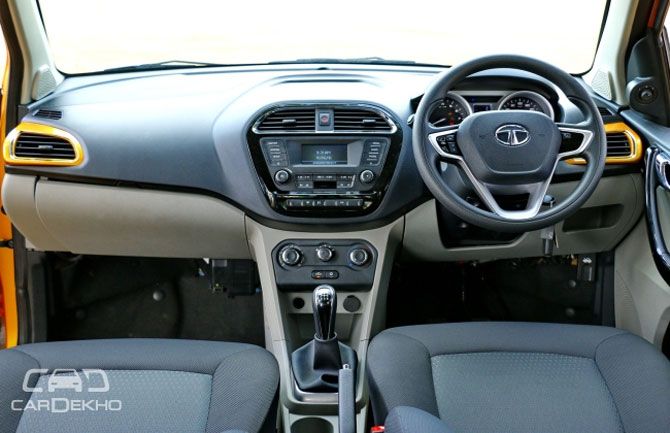
The design is contemporary, and, more importantly, it is the overall fit and finish which have improved manifold.
The Tiago we had featured the body coloured palettes on the side AC vents, which we feel really spruce up the ambience.
Its overall black and grey theme with contrasting piano black and body coloured inserts along with chrome highlight makes its dashboard look one of the most opulent in the segment.
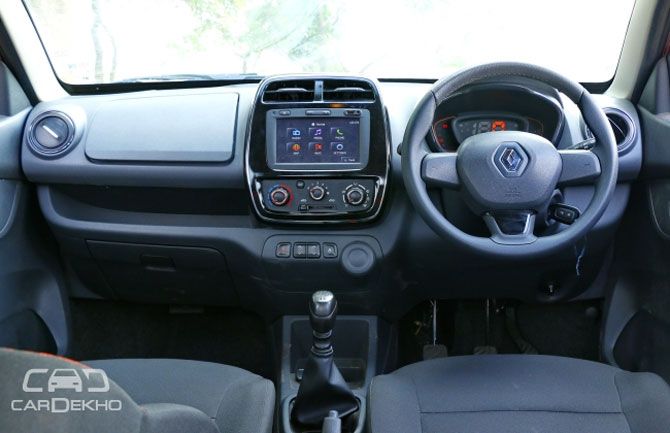
The Renault Kwid, on the other hand, features an all-black dashboard. The whole purpose of the design is to be as utilitarian as it can be, but at the same time, it tries to be geeky and funky too, appealing to the young.

Irrespective of the segment, the Kwid comes with Renault's 7-inch MediaNav touchscreen infotainment system with navigation, the same unit that was previously offered with the pre-facelift version of the Duster.
It is coupled to two speakers present on top of the dashboard at the extremities.
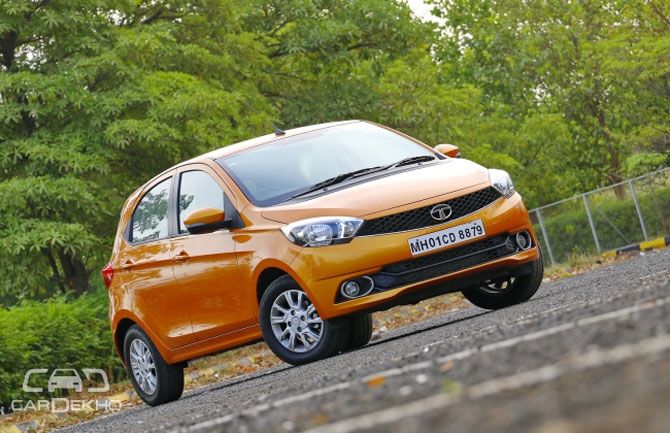
You get a lot of storage spaces - twin gloveboxes, a parcel shelf, centre tunnel and then some more in the door pads as well. Moreover, the instrument cluster is an all-digital unit and the top-end variant comes with a partial leather-wrapped steering wheel.
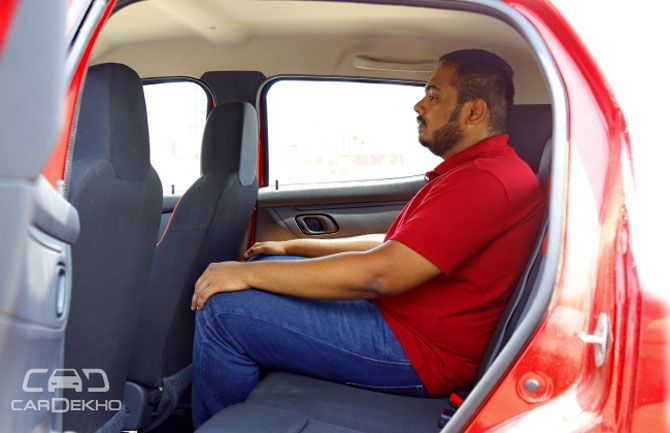
The Kwid is surprisingly spacious for it size. The cabin can easily accommodate four suitably large adults. Another area where the Kwid trumps is its mammoth 300-litres of boot space.
If there is a question of boot space, the Kwid can easily challenge hatches almost a segment above. The Tata Tiago, in contrast, has compromised on the boot space slightly to give that extra bit of legroom – it offers better leg and knee room, while the headroom is more or less on par.
Both the vehicles are best suited for four-seaters, but the comfort quotient is more with the Tata than the Renault.

The cushioning and bolstering is slightly better and the backrest on the rear bench is set at a relaxed angle on the Tiago. Also, the driver’s seat is height-adjustable, the steering can be adjusted for tilt and there’s an adjustable headrest - all of which is not available in the Kwid.
In terms of equipment, the Tata outshines the Renault. For the extra buck you pay the Tiago offers a comprehensive multi-information display, steering-mounted audio controls, all four power windows, a chilled glovebox and an amazing Harman powered eight-speaker audio
Engine and performance
Let us first take a look at the vital specifications of the petrol engines
|
Renault Kwid: 799cc ' 54PS @ 5678rpm ' 72Nm @ 4386rpm ' ARAI Certified Mileage: 25.17kmpl Tata Tiago: 1199cc ' 85PS @ 6000rpm ' 114Nm @ 3500rpm ' ARAI Certified Mileage: 23.84kmpl |
Both the vehicles offer a three-pot motor, but the Tiago has a larger engine and is obviously zippier than the Kwid. The Tata has a whole 31PS of extra power at the disposal of your right foot.
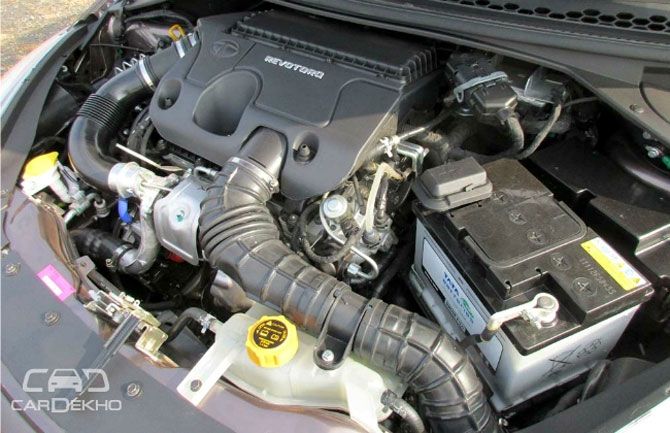
This said, both the hatchbacks are not happy if you push them hard - putter around calmly and the motors are happy to oblige. There is just ample low-end torque available on a flat surface which let you set off without going heavy on the accelerator.
However, the Kwid struggles slightly on inclines and the situation get worse with the car loaded to the brim. In comparison, the Tata feel more relaxed and assured in this regard.
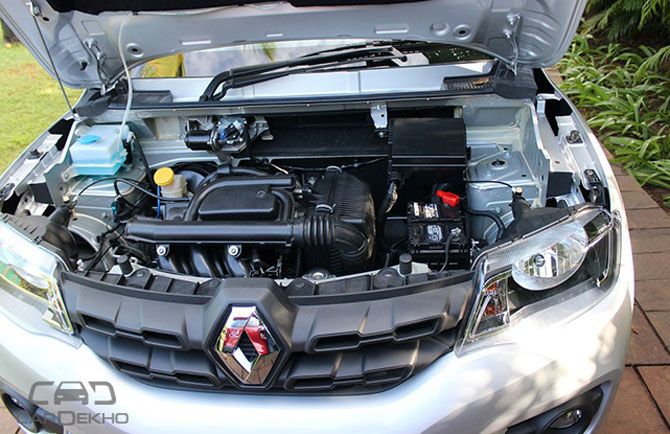
Both the cars are pretty much easy to manoeuvre in and around the city. These hatchbacks with tiny petrol drivetrains don't require much effort since the steering is so light you can use your finger to dial in steering inputs.
Their compact dimensions further make things easier to deal with the traffic or to park in a tight spot. Speaking of the noise levels, the Tata seems quieter than the Renault in this area. Having said this, both the car score low when it comes to cabin quietness.
Ride, handling and braking
In the tight traffic-packed city commutes the Kwid will make you fall in love with its ultralight steering wheel. You’ll start adoring those tiny gaps in the jam, though we request you to maintain your lane!
But increase the pace and it barely lets you know what the front wheels are up to. At high speeds it feels vague and lifeless and while cornering you have to trust your gut.
The Tiago’s steering wheel, on the other hand, is equally light at low speeds but weighs up much better as pace increase. But that doesn't mean it sets any benchmark anywhere, however, in this comparison, it is notably better than the Kwid.
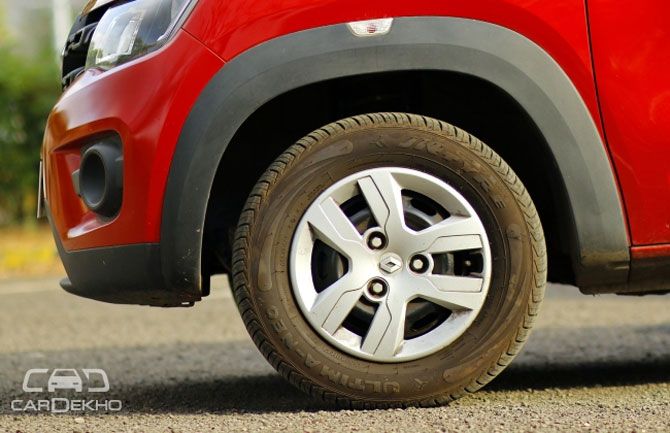
The Kwid has not just borrowed the essence of the Duster in terms of design, but the former is also on its way to set an example when it comes to ride quality in its segment, just like the Duster. Keeping in account its small dimensions and skinny wheels, the Kwid’s ride quality is supple.
The suspension setup is soft, which absorbs most of the little potholes at low speeds. At high speeds, courtesy to its softer setup, the ride is slightly floaty which makes one feel disconnected from the road.
The Tiago also doesn’t have a different story to tell here, cushiony when slow, and slightly bouncy when fast. But out of the two, it’s the Tata which feels more sure-footed.
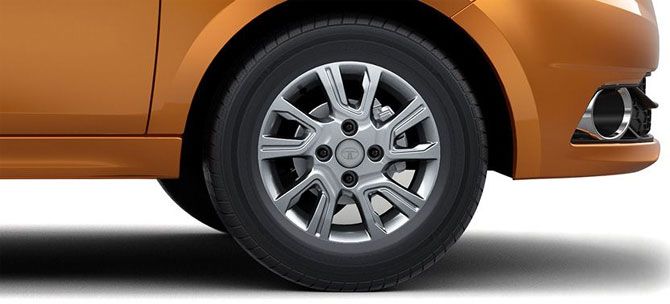
This said, we would certainly not pick any of these as a highway mile muncher, but if we had to, it is the Tiago rather than the Kwid.
Speaking of stopping power the Tiago offers more than adequate braking power, and it feels assured at most of the occasions. A little more feedback from the brake pedal itself would make things better, but other than that, it's all good.
The Kwid, on the other hand, with no ABS (anti-lock braking system) the tyres tend to lock up far too easily (The Tiago offers ABS).

A fatter set of rubber is heavily recommended - this upgrade will not only provide better grip but also add better stopping capability as well. Besides the ABS, the Kwid also skips out on a passenger airbag, whereas the one for the driver is optional. It is good to see that Tata offers dual airbags as an option on every variant, barring the base.
Verdict
We are repeating it again - the Tiago’s pricing is spot on considering all the stuff the hatchback is offering. It literally defines the tagline of the Indica - ‘More Car Per Car’. If you have a choice and your budget allows please shell out extra and go for the Tiago. Talking on an EMI basis, the top-of-the-line Tiago will cost about Rs 3,000 extra compared to the top-spec Kwid.
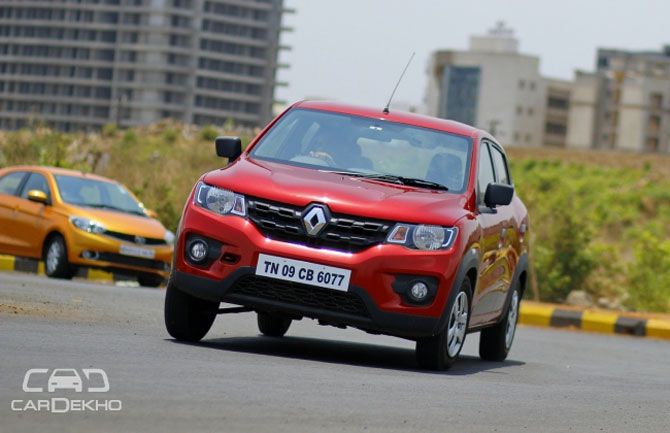
And for the slight premium that you’ll pay, the Tiago offers more safety tech, bigger engine, space and more creature comfort. Taking into the fact that the 1.0-litre Kwid is around the corner and will be considerably expensive in contrast to its 800cc counterpart, the Tiago makes an even stronger case for itself.
However, if you’re on a tight budget, the Kwid makes for a sensible purchase. The vehicle is very spacious considering its size and is comfortable to drive as well. But we recommend picking the top-spec RXT (O) variant, for the safety net of the airbag alone.
Renault Kwid
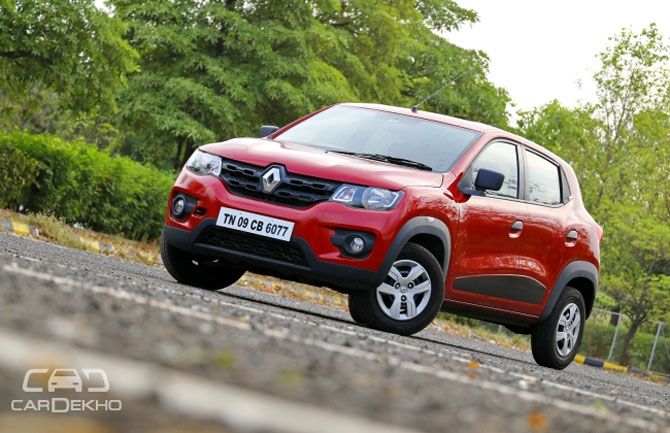
What we like
- 300-litre boot is unheard of in this segment and is coupled to a roomy cabin
- Premium features: touchscreen infotainment with navigation, digital instrument cluster
- Ride quality. Easily one of the most comfortable entry-level cars
What we don't
- Light build quality and could have offered a better paint work
- ABS (anti-lock braking system) should be on offer, at least as an option along with a passenger airbag
- Skinny tyres do not offer much grip
Tata Tiago

What we like
- Chic design. Both exteriors and interiors
- Features loaded to the brim: height-adjustable seat, chilled glovebox, audio system with app integration etc
- 8-speaker Harman audio system is unheard of this segment and price point
- Dual airbags and ABS available across variants barring the base
What we don't
- Cramped footwell. Closely spaced pedals takes some getting used to
- Noise, vibration and harshness levels could have been better
Powered by 
CarDekho.com offers the best platform in India to research cars online. Make better car buying decisions using features like car research, reviews, car comparisons, discounts, on-road prices etc. on CarDekho.com.









